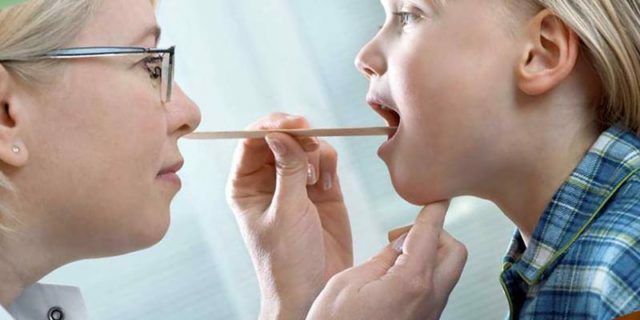
Contents of page
- 1 Obstructive bronchitis in children - causes of
- disease 2 Symptoms and signs
- 3 Diagnosis of bronchitis with obstructive syndrome
- 4 Treatment of
- 5 Mucolytic therapy
- 6 Antihistamine therapy
- 7 Infection control
- 8 Supportive methods of bronchial obstruction
- 9 Reviews abouttreatment of
Colds in children often pass from the nasopharynx into the respiratory tract, affecting the trachea and bronchi. Infectious agents cause inflammation of the mucous membrane of the bronchial tree, accompanied by a painful cough and secretion of difficult-to-detach mucus. Obstructive bronchitis in children differs from the usual appearance of attacks of suffocation.
Obstructive bronchitis in children - causes of
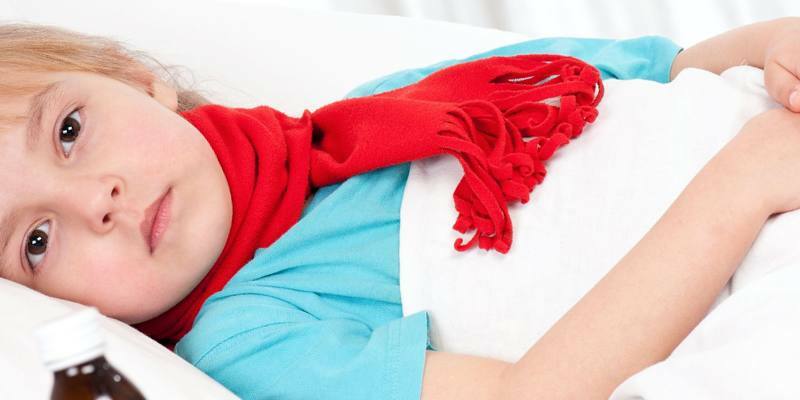
disease. Children under 5 years old are the main targets of bronchitis with respiratory failure. This is due to the peculiarities of the functioning of the respiratory system in young children with respect to adults:
- The incompletely formed epithelial layer of the bronchi leads to the development of a very viscous secret in babies, which is hardly promoted by the flickering cilia outwards. There is stagnation of sputum, which promotes the propagation of pathogenic flora in the respiratory tract.
- The bronchi themselves in childhood have a narrow lumen due to hypertrophy of the glandular tissue.
- Smooth muscles lining the walls of the bronchi, children are too sensitive to irritation. Even for a small impact, they can react with a strong spasm.
- Local immunity in infants is not yet developed.
- Crumbs are more prone to allergic reactions.
Additional factors exacerbate the already fragile state of respiratory organs:
- pathologies obtained in the intrauterine and ancestral period;
- early refusal of breastfeeding( up to a year);
- excess or light weight;
- hypovitaminosis D;
- frequent infectious diseases in infancy;
- weak thermoregulation in toddlers;
- unhealthy climatic and ecological conditions;
- detrimental habits of parents - smoking, drinking alcohol during pregnancy.
The immediate causes of obstructive bronchitis in children are associated with the penetration of pathogenic pathogens into the upper respiratory tract:
- of a viral infection( parainfluenza, adenovirus, cytomegalovirus, respiratory syncytial virus);
- bacteria( mycoplasmas, chlamydia, streptococci, pneumococci).
Symptoms and signs

The main symptom of the disease is bronchoobstructive syndrome. It manifests itself paroxysmally, usually on the background of ARI or child's hypothermia and is characterized by the following symptoms:
- with frequent and loud wheezing - up to 70 - 90 respiratory cycles at a rate of about 20 per minute;
- sensation of suffocation;
- by expiratory dyspnoea - shortness of breath;
- by the inclusion of auxiliary muscles in the respiratory process - intercostal spaces, podrugodnoe space drawn inwards;
- by a dry cough without sputum or with a minimum amount;
- pains in the ribs, between the shoulder blades, in the solar plexus.
Symptoms of obstructive bronchitis in children occur on days 2 to 4 of the cold with pronounced catarrhal symptoms: a runny nose, a red swollen throat, an unproductive cough. Infection, descending through the trachea into the bronchial branches, causes an inflammatory reaction with mucosal edema, increased secretion of thick sputum and spasms.
The attack usually happens at night and develops instantly: from afar it is heard how the child makes wheezing sounds. He has a high pulse, his face becomes bluish. Kroha sits down on the bed and leans on his hands - it's easier for him to breathe. The temperature does not usually exceed 37.5 ° C.
Such seizures last 2 - 3 days, in weakened children, the acute phase may be prolonged. Out of attacks, dyspnea persists, especially with physical exertion.
It is problematic to identify bronchospasm in infants, because they can not present specific complaints and express almost any discomfort with anxiety and screaming. Obstructive bronchitis in children up to a year can be suspected by the appearance:
- of an obsessive cough with vomiting;
- whistling, wheezing sounds during breathing;
- of sobbing crying;
- severe bloating of the chest;
- subfebrile temperature.
Bronchoconstruction is a condition that causes respiratory failure. It can have varying degrees of severity - from mild to dangerous form. Usually bronchitis does not lead to serious consequences, but if it is accompanied by severe attacks of asthma, it is necessary to call an ambulance. Such cases include:
- inability to breathe normally;
- dyspnea is not stopped by the intake of bronchodilators;
- the child can not breathe lying down, making gurgling sounds and getting relief only in an upright position;
- the nasolabial triangle turns blue, and then the entire face;
- develops dizziness, headache;
- is rapidly rising body temperature.
Diagnosis of bronchitis with obstructive syndrome

Even if the child already had bronchitis, in the case of obstruction, the same treatment can not be used. It is important to diagnose the presence of bronchospasm and make sure that it is not caused by any other disease with similar symptoms. The baby needs to be shown to the pediatrician and specialized specialists - pulmonologist, ENT, allergist.
To clarify the diagnosis, the following studies are performed:
- anamnesis, including family history;
- clinical blood test( leukocytosis and elevated ESR indicate inflammation);
- stethoscopy( listening reveals finely bubbling rales and noises in the bronchi);
- radiography( a picture demonstrates augmentation of the pulmonary pattern);
- sputum analysis( determines the pathogen and its sensitivity to antibiotics);
- spirometry( measures the volume and speed of breathing).
If necessary, the immunologist conducts allergens, also the analysis on worms is also recommended.
Acute obstructive bronchitis in children should be differentiated from other pathologies with a similar symptom-complex:

- Bronchial asthma. It is distinguished by the obligatory presence of an allergic factor. The attack can appear at any time, and not just at night. Due to the absence of the inflammatory component, the body temperature is normal.
- Narrowing of the larynx against the background of laryngotracheitis. Symptoms of obstruction resemble bronchitis, but difficulty causes inhalation, and not exhalation - the so-called inspiratory dyspnea. The temperature rises above the low-grade figures.
- Aspiration of foreign objects. Cough with signs of suffocation occurs in a healthy child without previous symptoms when ingested in the respiratory tract food, liquids, small bodies.
- Acute bronchiolitis. Coughing attacks end with vomiting with the release of abundant foamy mucus. Excess of sputum is formed due to excessive growth of the epithelium.
- Cystic fibrosis. Genetic pathology that manifests itself in infancy. Cough is similar to whooping cough, accompanied by suffocation, the allocation of large amounts of sputum, vomiting. Analysis of the disease is done in maternity hospitals, but it can manifest itself even before the results are obtained.
- Clover invasion. Some parasites can be introduced into the lung tissue, getting into it from the digestive tract through the bloodstream. Helminths cause severe obstruction, which can only be eliminated by special therapy.
The treatment of bronchitis and other obstructive diseases is different, so it is extremely important to conduct a qualified diagnosis.
Treatment of
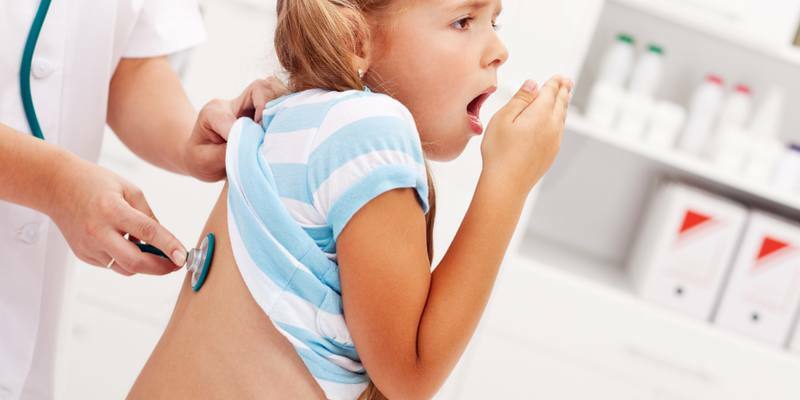
Obstructive bronchitis in a child of 2 years and younger is best treated in a hospital. Older patients in the absence of severe attacks can stay at home and undergo therapy under the supervision of a local doctor. Indications for hospitalization of a patient who is at home are:
- increased signs of hypoxia;
- poor efficacy of the treatment, no improvement within 4 to 6 hours;
- rapid development of the disease.
In other cases, it is enough to follow the medical recommendations and arrange the sick child with the conditions for a speedy recovery:
- Provide a hypoallergenic diet.
- Drink abundantly with warm mineral water with alkaline composition( Borjomi, Essentuki), compote, mors.
- Keep in the room where the patient is kept clean: regularly wipe surfaces, do wet cleaning without household chemicals, get rid of objects that accumulate dust( soft toys, carpets).
- Take care of the microclimate in the room: ventilate more often, use an air humidifier. The temperature in the nursery should not exceed 20, ideally - 18 degrees, humidity - at a level of 50 - 70%.
The child needs to breathe cool and moist air, drink a lot to prevent thickening of mucus in the lungs. It is advisable to go out for walks for 1 - 2 hours, without babbling, dressing in the weather. At home - do not make the crumb lie, let him play games and habitual matters - so the sputum will not stagnate in the bronchi. Necessarily it is necessary to clear a nose, if necessary - to instill vasoconstrictive drops.
Mucolytic therapy
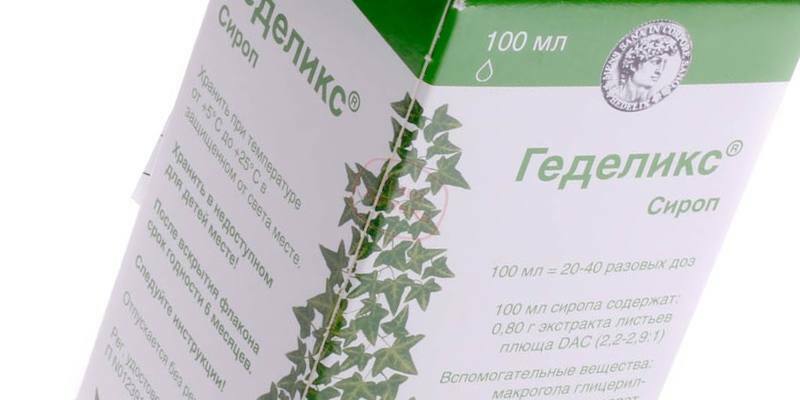
How and what to treat obstructive bronchitis in children - the doctor decides whether antibiotics, bronchodilators, inhaled glucocorticosteroids are needed depends on the severity of the symptoms and the type of pathogen. As a rule, patients older than 2 years are prescribed funds that dilute sputum and help in its elimination:
- for moistening bronchial mucosa and softening of mucus are good dispersive inhalations with mineral water or saline solution with the help of a nebulizer;
- preparations based on ambroxol are taken at the age of oral dosage( tablets, syrup) or by inhalation - Ambrobe, Lazolvan, Ambroghexal, Flavamed and analogues;
- with sputum liquefaction and cough transfer into the wet form of mucolytics are replaced by expectorants - breastfeeding, Bronchicum, Herbion, Dr. Theiss, Dr. Mom, Gedelix and others.
Mucolytics and expectorants should not be given alone, only as directed by a physician. To children under 2 years, these drugs are contraindicated, since the child is difficult to cough up abundant mucus. Medications that suppress the cough reflex, with obstructive bronchitis are strictly prohibited!
Antihistamine therapy

Antihistamines are indicated for children who have allergic reactions, either current or in history. Gyrdnits from 6 months are allowed Zirtek, to children after 2 years - Erius, Kliritin, in 5 - Telfast and synonyms.
However, many experts are of the opinion that bronchial obstruction always has an allergic component. When the nasal sinuses infected with the infection do poorly with the functions of cleaning, heating and humidifying the inhaled air, it enters the lungs in an unadapted form and provokes a negative reaction of the bronchi to the usual impurities. These are particles of dust, household chemicals, wool of a beloved teddy bear and other factors that normally are normally perceived by the child's body.
Dr. Komarovsky, speaking of the treatment of obstructive bronchitis in children, argues that this disease in any case is infectious-allergic, and antihistmines are an important part of therapy. These drugs reduce the hyperreactivity of the bronchi, thereby reducing spasms and swelling of the airways.
Bronchodilator therapy
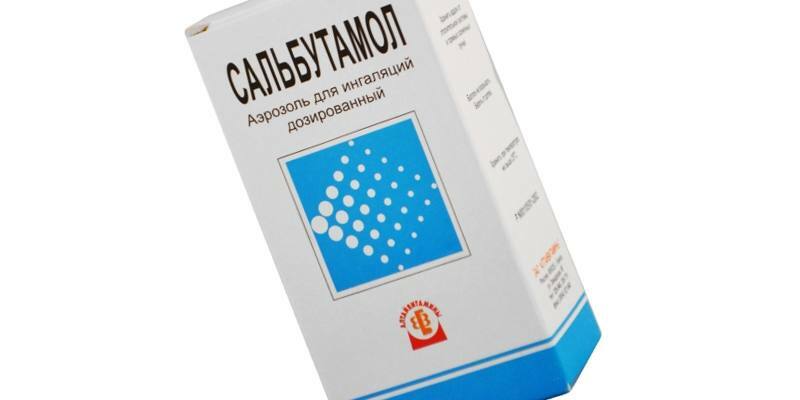
To stop obstruction, drugs that relieve spasm of the bronchi and expand their lumen are used. It is best to use inhaled medications:
- Berodual - for the youngest is bred saline and inhaled through the nebulizer 2 - 3 times a day.
- Salbutamol - for children from 1.5 years in the form of a solution for inhalation, from 2 years - an aerosol for 1 to 2 doses up to 6 times a day.
At an older age, you can give bronchodilators in tablets and syrup( Salmeterol, Ascoril), theophylline preparations( Euphyllin).In severe cases, hormonal agents are shown( Pulmicort, Budenitis) - both in oral and inhalation form. However, Salbutamol and Berodual are preferred because they have fewer side effects. All these drugs quickly remove bronchial obstruction - the effect occurs in the interval of 5 to 20 minutes.
Fighting the infection
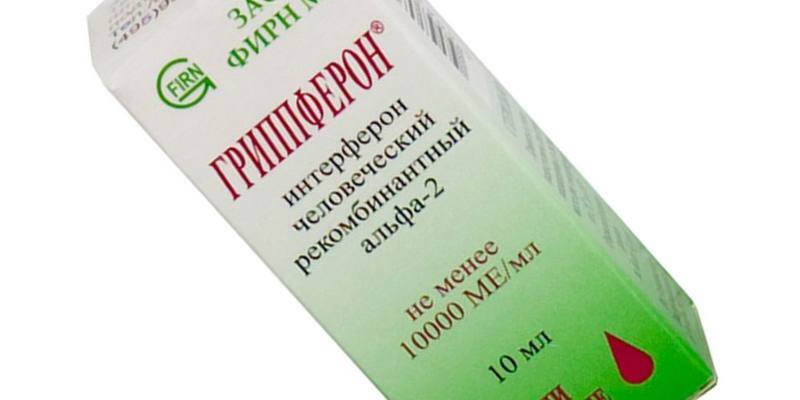
Bronchitis often occurs against the background of ARVI.Antiviral drugs help to fight the infection faster:
- Grippferon - nasal drops;
- Viferon - rectal suppositories;
- Orvirium - syrup for children from 1 year;
- Arbidol, Kagocel - tablets with 3 years.
In bronchial obstruction, immunostimulants should not be given to a child - they can activate the already excessive secretion of phlegm.
Antibiotics for ARVI are not needed, they are prescribed only if the analysis shows the presence of bacterial infection, and the child showed signs of pneumonia:
- high temperature, which lasts more than 3 days;
- wet rales;
- symptoms of intoxication;
- purulent mucus( yellow).
In case of microbial inflammation the pediatrician prescribes Cefazolin, Macroben, Augmentin - preparations of a wide spectrum.
With competent therapy, a child with bronchitis recovers within a week. In most children, a well-treated acute inflammation in 50 to 70% of cases remains the only episode. But the recurrent obstructive bronchitis in children is not excluded - repetition for 6 months - a year against the background of a new acute respiratory viral infection. In the absence of complications, this form of the disease occurs by 3 to 4 years.
Auxiliary methods of treatment of bronchial obstruction
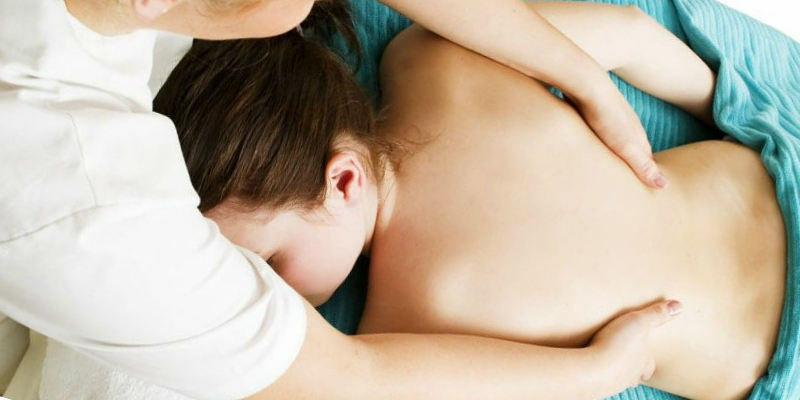
Home methods that parents are used to treating children for colds with obstructive bronchitis do not work, and moreover, are capable of causing harm. These are things like mustard, ointments, inhalations, compresses based on herbs and essential oils - these "drugs" can provoke a child's bronchospasm.
But massage and breathing exercises do not interfere. Massage is needed special - postural. The crumb falls on the belly, the head below the legs. With a slight tapping of the palm ridge on the back, sputum is drained from the respiratory tract.
Simple breathing exercises, such as inflating the ball, also contribute to the mucus discharge, and also reduce hypoxia in the child due to active ventilation of the lungs.
Treatment of obstructive bronchitis with folk remedies includes:
- "dry" warming - warm sand, salt, buckwheat;
- cowberry broth - for sputum discharge;
- hot milk in which 2 figs are cooked;
- compress made of butter and honey - the mixture is prepared from heated foods, applied to the back and chest, wrapped in fabric and polyethylene;
- gruel from the milled bulbs, cooked for 2 hours, sugar and honey( 4 tbsp each) and apple cider vinegar( 2 tbsp.) - 0.5 teaspoon once a hour for 5 days;
- mixture of berries with watermelon( 200 grams) and 100 grams of water, left on fire until the liquid boils, - half a small spoon every 3 hours.
Using folk recipes, it is important to remember that honey and many herbs are powerful allergens. They can be used only if the child has never had negative reactions on them.
Prevention of

Up to 90% of cases of obstructive bronchitis result from a viral infection. It is impossible to save a child from colds, but to try to make it easier and not to give complications, parents are quite capable. In fact, the prevention of obstructive bronchitis in children - is the prevention of acute respiratory infections, which includes:
- timely vaccination against childhood infections and influenza;
- sanation of foci of chronic ENT pathologies;
- adequate treatment of acute respiratory diseases;
- absence of supercooling, sharp temperature fluctuations;
- hardening measures;
- strengthening of immunity;
- avoiding public places during periods of seasonal epidemics.
For the health of babies, the intrauterine and infants are extremely important:
- a full-fledged mother's nutrition;
- quitting during and after wearing;
- prolonged breastfeeding;
- optimum microclimate in the nursery;
- regular long walks;
- use of hypoallergenic detergents for washing, cleaning, hygiene.
If the child has already caught a cold, it is important to prevent the development of bronchial obstruction. To do this, there are 3 main rules:
- Abundant drink.
- Clean, cool, humid air.
- Breathable nose.
Frequent obstructive bronchitis in a child can indicate the development of an infectious-allergic variety of asthma, which is always exacerbated against the background of ARVI.In such cases, in addition to preventing catarrhal diseases, it is necessary to maximally isolate the baby from allergens: household "dust collectors" in the form of carpets and soft toys, potentially dangerous food, passive smoking, chemical vapors, automobile exhausts. Recommended walks away from the highways, sanatorium treatment, sea air.
Reviews about the treatment of
The experience of treatment and prevention of bronchitis with obstruction is shared by the participants of the parent forum:
Testimonial №1
My daughter was 4 months old, I do not know where the virus was seized, in general, and I, and she - both got sick. Treated as usual: droplets in the nose, Lazolvan from a cough, homeopathy from the flu. At night, I jumped from the fact that it's difficult to breathe, the air is straight through with a whistle, was scared.
I watch, and the child is also sizzling. In the morning they called a doctor, put obstructive bronchitis, prescribed Berodual and alternated inhalations with mineral water. Our father ran to the pharmacy, bought a nebulizer - so one by one and breathed. Now we always do inhalations, as soon as ORL gets sick - 2 - 3 ml of saline and everything, the lungs are moistened, the phlegm clears throat well.
Irina, Moscow
Review №2
And we were not lucky with the baby. At night, the ambulance took me and took me to the hospital. They detected bronchitis, immediately began to prick antibiotics. The child is getting worse and worse, wheezing, gasping. In the chamber of heat, stuffiness, walk do not release, bed rest still. Well, my husband brought a tablet, and I looked at the school of Dr. Komarovsky. It turns out that we were treated in the wrong way!
With obstructive bronchitis antibiotics are not needed, from cough syrup - everything does not fit. In the end, so healed that the spasms of his son managed to remove only hormones! Were discharged home under their responsibility, found a normal pediatrician. He forced to buy a moisturizer in the nursery, to dress the child warmly and open the window, and still do the back massage. The nose must be washed with Dolphin, then drops.3 times a day to breathe through the inhaler Berodual, half a tablet of suprastin in the morning and at night. "
Varvara, Minsk



